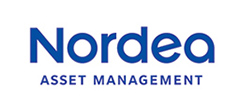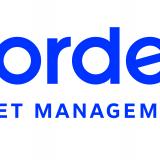
By Thede Rüst, head of Emerging Markets Debt at Nordea Asset Management
Sustainable investments are also increasingly in demand on the bond market. According to Bloomberg, governments, supranationals and companies issued a total of 863 billion US dollars in ESG bonds worldwide in 2022. Green bonds accounted for the largest share of this at USD 480 billion. Even though the market segment only accounts for around 1% of the global bond market, it has already differentiated significantly in recent years and, in addition to green bonds, also offers investors the opportunity to invest in social bonds, broader sustainable bonds and sustainable-linked structures whose coupon depends on the sustainability performance of the issuer.
Following this differentiation across the board, we now expect the market to deepen significantly in all of the aforementioned market segments. We will also see more and more issues, liquidity in the secondary market will increase, and broader investor groups will turn to the various sustainability bonds. Similar to the early years of the green bond segment, it is now often still the dedicated sustainability investors who fill the order books of the syndicate banks for the other types of issues. They are doing the pioneering work and broader investor circles will follow. The Global Sustainable Investment Alliance, for example, estimates that the addressable market for ESG bonds could exceed 35 trillion US dollars in the coming years.
Social bonds and investments in the “S-pillar” of ESG in particular will play a more significant role for investors overall. In the case of social bonds, the terms of issue specify in which social projects the capital proceeds are invested. Investors thus have full transparency about the use of their money. Only if the purpose of the bond can be clearly classified as social in the sense of the principles adopted by the International Capital Markets Association (ICMA) will it be recognised on the market as a “genuine” social bond. Projects for the further development of health care, the creation of affordable housing or the improvement of access to education are possible financing purposes of social bonds.
Three concrete examples show how diverse the possible uses of revenue streams from social bonds already are:
- In March 2021, the French Assistance Publique – Hôpitaux de Paris (AP-HP) became the first European healthcare institution to issue two social bonds. The proceeds will be used to finance key projects in French hospitals to improve access to healthcare for disadvantaged populations.
- During the Corona pandemic, the EU refinanced the European short-time working scheme SURE for a total of €100 billion through Social Bonds.
- Under its Social Bond Framework, the International Finance Corporation, part of the World Bank, launched two dozen Social Bonds in six currencies in 2021 alone. Investors’ money will finance 42 projects ranging from education to infrastructure, including access to information and communication technology in the Republic of Kyrgyzstan and support programmes for women’s micro-enterprises in Nigeria.
From an investor’s point of view, it is striking that while sustainable investments in Europe are all too often primarily associated with ecological goals, on the international stage or in other regions of the world, social issues are already at the centre of the discussion on the sensible management of capital flows. Issuing activity and thus also investment opportunities in the area of social bonds can therefore be distributed very differently from region to region.
No uniform understanding of social impact
The particular challenge in structuring social bonds is to identify relevant projects and measure their social impact. While the carbon footprint of corporate activities is now quantifiable, it becomes more difficult when trying to determine the contribution of a newly built hospital to better health care in a structurally weak region. For us as asset managers, whose clients rightly expect transparent measurement and publication of the impact achieved, this is a key challenge.
Therefore, it is still mainly states, supranational actors and development banks (SSAs) that dare to issue social bonds, which can finance socially useful projects that are relatively easy to define and can refinance them by means of social bonds.
However, growth rates averaging 200% annually since 2011 and an issuing volume of USD 141 billion in 2022 show that the market already has a relevant investment universe. At the same time, it is to be expected that issuers in the SSA sector will increasingly be followed by private financial institutions and companies. If, for example, banks finance the construction and operation of schools and kindergartens, or private operators of care facilities invest in affordable access to health services, then such projects could be well refinanced via social bonds.
Nevertheless, as investors we have to recognise that the social bond market is an emerging one that is not comparable to the broad conventional bond market – nor yet to the green bond market. So if we invest specifically and with a dedicated social bond fund in this market, we do so deliberately with a certain flexibility to also buy conventional bonds if the respective issuer meets our sustainability requirements.
Meanwhile, the unqualified good news for investors is: Despite the fact that the market is not yet fully mature, social bonds can already keep up with comparable conventional bonds in terms of financial return, as a study by the Centre for Banking and Finance at the Italian University UNIMORE shows.
Also due to its economic attractiveness, we expect the social bond market to continue to grow strongly. Moreover, the immense appetite for avowedly sustainable assets among investors around the globe will continue to drive issuance and market maturation. However, while standards in the market are not yet as firmly established as they are for green bonds, for example, it is important to gain a deep understanding of each individual issue and issuer, not least through active engagement and the establishment of our own analytical and measurement processes. Only in this way can we direct capital to where it offers an attractive financial and social return.
About Nordea Asset Management
Nordea Asset Management (NAM, AuM 239bn EUR*), is part of the Nordea Group, the largest financial services group in the Nordic region (AuM 359bn EUR*). NAM offers European and global investors exposure to a broad set of investment funds. We serve a wide range of clients and distributors which include banks, asset managers, independent financial advisors and insurance companies.
Nordea Asset Management has a presence in Bonn, Brussels, Copenhagen, Frankfurt, Helsinki, Lisbon, London, Luxembourg, Madrid, Milan, New York, Oslo, Paris, Santiago de Chile, Singapore, Stockholm, Vienna and Zurich. Nordea's local presence goes hand in hand with the objective of being accessible and offering the best service to clients.
Nordea’s success is based on a sustainable and unique multi-boutique approach that combines the expertise of specialised internal boutiques with exclusive external competences allowing us to deliver alpha in a stable way for the benefit of our clients. NAM solutions cover all asset classes from fixed income and equity to multi asset solutions, and manage local and European as well as US, global and emerging market products.
*Source: Nordea Investment Funds, S.A., 31.12.2022
Nordea Asset Management is the functional name of the asset management business conducted by the legal entities Nordea Investment Funds S.A. and Nordea Investment Management AB (“the Legal Entities”) and their branches and subsidiaries. This document is advertising material and is intended to provide the reader with information on Nordea’s specific capabilities. This document (or any views or opinions expressed in this document) does not amount to an investment advice nor does it constitute a recommendation to invest in any financial product, investment structure or instrument, to enter into or unwind any transaction or to participate in any particular trading strategy. This document is not an offer to buy or sell, or a solicitation of an offer to buy or sell any security or instruments or to participate to any such trading strategy. Any such offering may be made only by an Offering Memorandum, or any similar contractual arrangement. Consequently, the information contained herein will be superseded in its entirety by such Offering Memorandum or contractual arrangement in its final form. Any investment decision should therefore only be based on the final legal documentation, without limitation and if applicable, Offering Memorandum, contractual arrangement, any relevant prospectus and the latest Key Information Document (KID) or the Key Investor Information Document (KIID) for UK investors where applicable, relating to the investment. The appropriateness of an investment or strategy will depend on an investor’s full circumstances and objectives. Nordea Investment Management AB recommends that investors independently evaluate particular investments and strategies as well as encourages investors to seek the advice of independent financial advisors when deemed relevant by the investor. Any products, securities, instruments or strategies discussed in this document may not be suitable for all investors. This document contains information which has been taken from a number of sources. While the information herein is considered to be correct, no representation or warranty can be given on the ultimate accuracy or completeness of such information and investors may use further sources to form a well-informed investment decision. Prospective investors or counterparties should discuss with their professional tax, legal, accounting and other adviser(s) with regards to the potential effect of any investment that they may enter into, including the possible risks and benefits of such investment. Prospective investors or counterparties should also fully understand the potential investment and ascertain that they have made an independent assessment of the appropriateness of such potential investment, based solely on their own intentions and ambitions. Investments in derivative and foreign exchange transactions may be subject to significant fluctuations which may affect the value of an investment. Investments in Emerging Markets involve a higher element of risk. The value of your investment can go up and down, and you could lose some or all of your invested money. Investments in equity and debt instruments issued by banks could bear the risk of being subject to the bail-in mechanism (meaning that equity and debt instruments could be written down in order to ensure that most unsecured creditors of an institution bear appropriate losses) as foreseen in EU Directive 2014/59/EU. Nordea Asset Management has decided to bear the cost for research, i.e. such cost is covered by existing fee arrangements (Management-/Administration-Fee). Published and created by the Legal Entities adherent to Nordea Asset Management. The Legal Entities are licensed and supervised by the Financial Supervisory Authority in Sweden and Luxembourg respectively. A summary of investor rights is available in English through the following link: https://www.nordea.lu/documents/summary-of-investors-rights/SOIR_eng_INT.pdf/. The Legal Entities’ branches and subsidiaries are licensed as well as regulated by their local financial supervisory authority in their respective country of domiciliation. Source (unless otherwise stated): Nordea Investment Funds S.A. Unless otherwise stated, all views expressed are those of the Legal Entities adherent to Nordea Asset Management and any of the Legal Entities’ branches and subsidiaries. This document may not be reproduced or circulated without prior permission. Reference to companies or other investments mentioned within this document should not be construed as a recommendation to the investor to buy or sell the same but is included for the purpose of illustration. The level of tax benefits and liabilities will depend on individual circumstances and may be subject to change in the future. © The Legal Entities adherent to Nordea Asset Management and any of the Legal Entities’ branches and/or subsidiaries.



